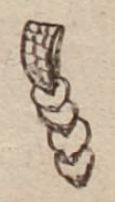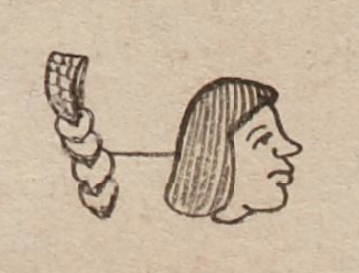Coacuech (Verg6v)
This black-line drawing of the compound glyph for the personal name Coacuech ("Snake-Rattle," attested here as a man’s name) shows a bird's eye view of the rattler-tail of a snake or serpent. The rattle consist of four heart-shaped parts. Above the rattle is a hint of the body of the serpent.
Stephanie Wood
The rattle has an implied sound. It also implies movement, when the snake is stirred enough to rattle its tail. But there are no indications of visual sound or visual movement in this glyph.
Stephanie Wood
juan. cohuacuech
Juan Coacuech
Stephanie Wood
1539
Jeff Haskett-Wood
cascabeles, serpientes, crótalos, nombres de hombres

coacuech(tli), a snake's rattler-tail, https://nahuatl.wired-humanities.org/content/coacuechtli
coa(tl), snake, serpent, https://nahuatl.wired-humanities.org/content/coatl
cuech(tli), a long shell, https://nahuatl.wired-humanities.org/content/cuechtli
Cascabel de Víbora
Stephanie Wood
Codex Vergara, folio 6v, https://gallica.bnf.fr/ark:/12148/btv1b84528032/f20.item
The non-commercial reuse of images from the Bibliothèque nationale de France is free as long as the user is in compliance with the legislation in force and provides the citation: “Source gallica.bnf.fr / Bibliothèque nationale de France” or “Source gallica.bnf.fr / BnF.” We would also appreciate a citation to the Visual Lexicon of Aztec Hieroglyphs, https://aztecglyphs.wired-humanities.org/.







